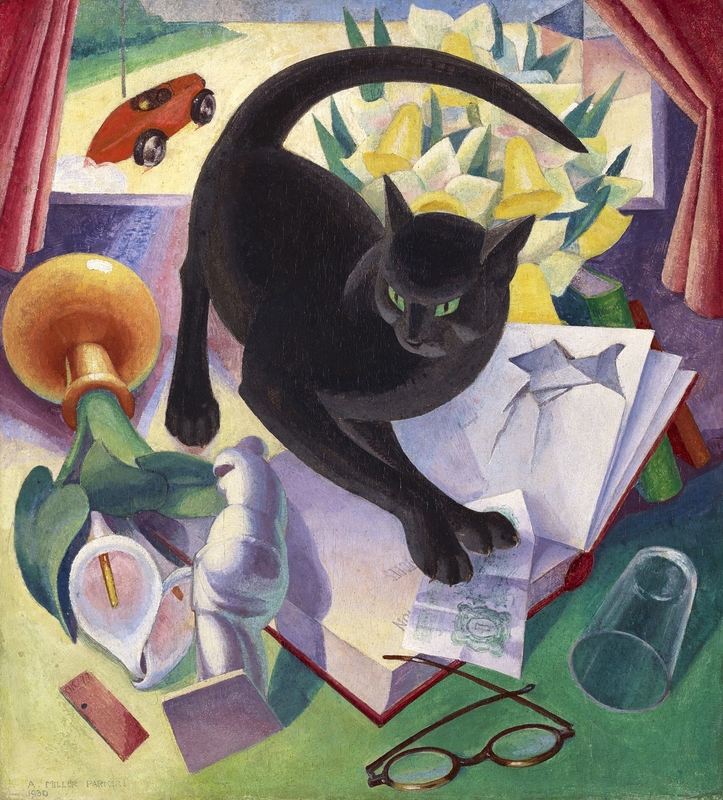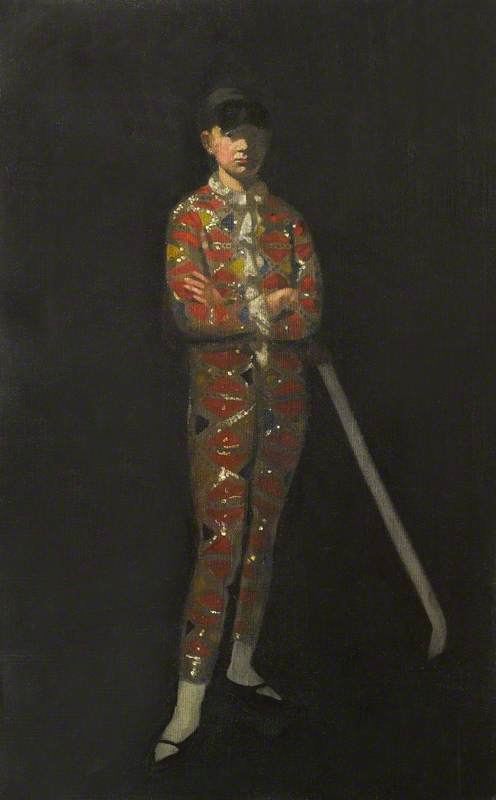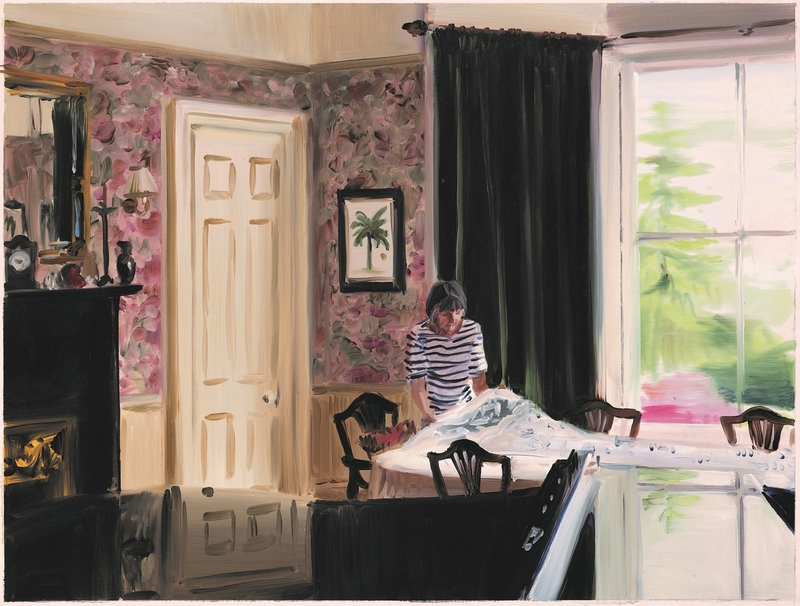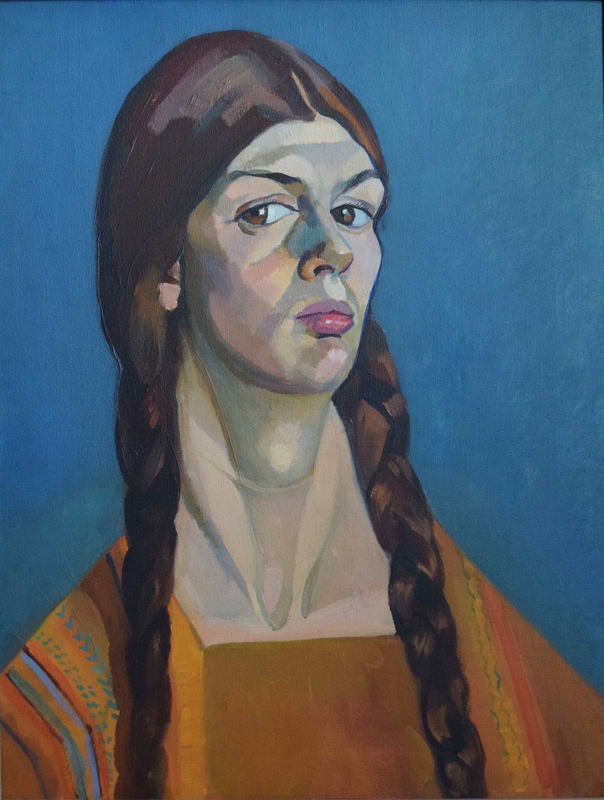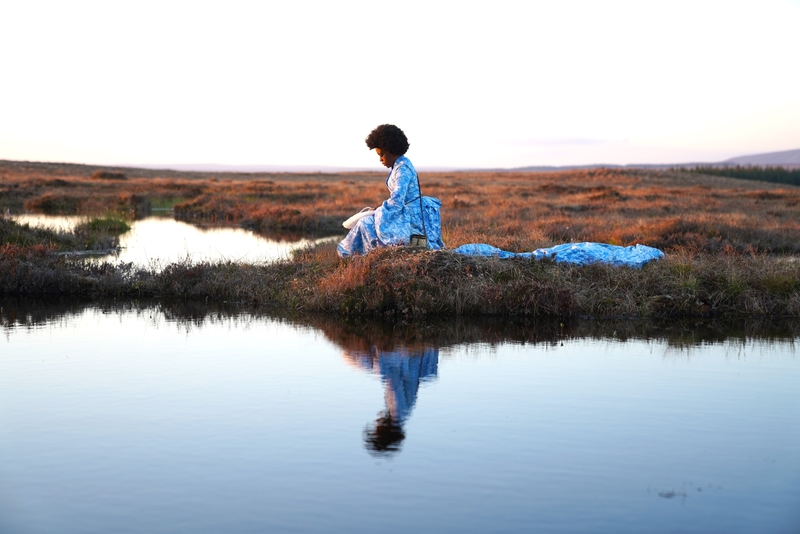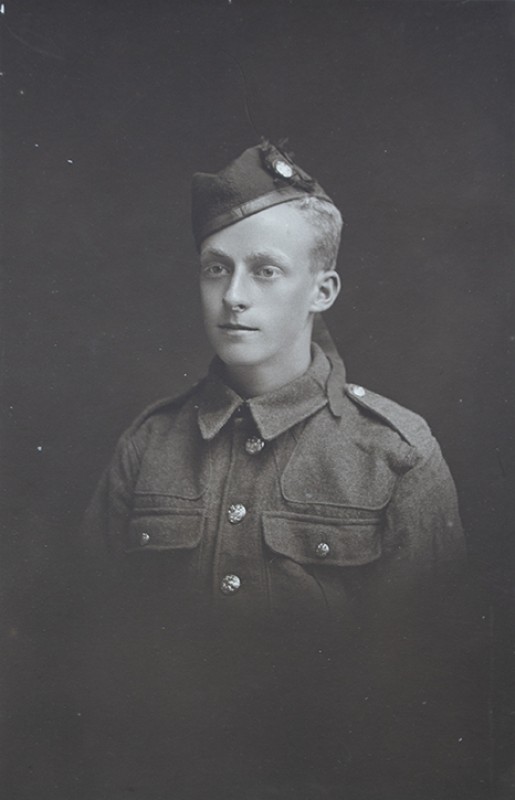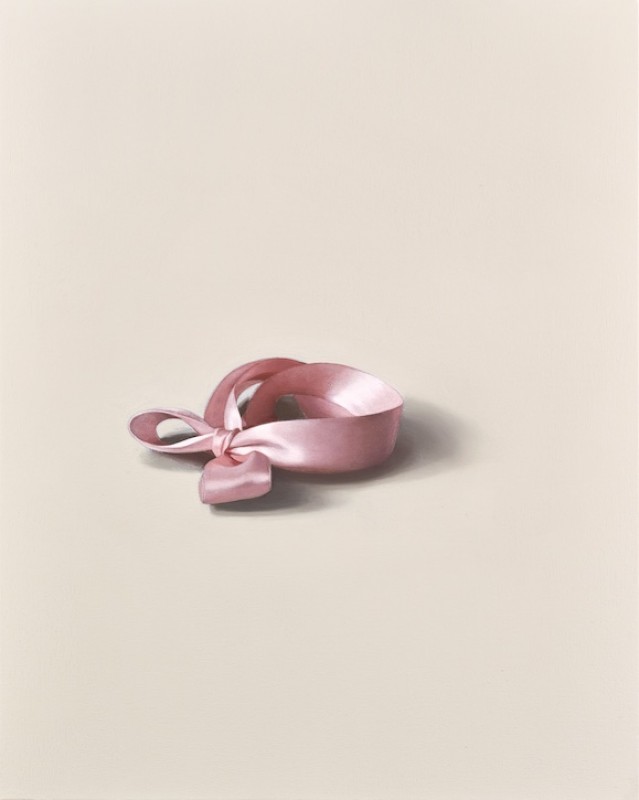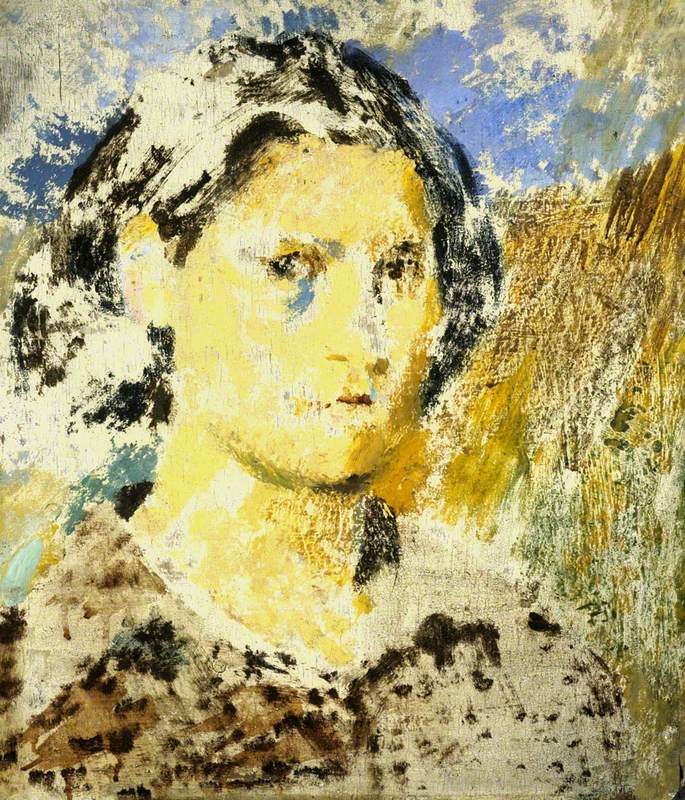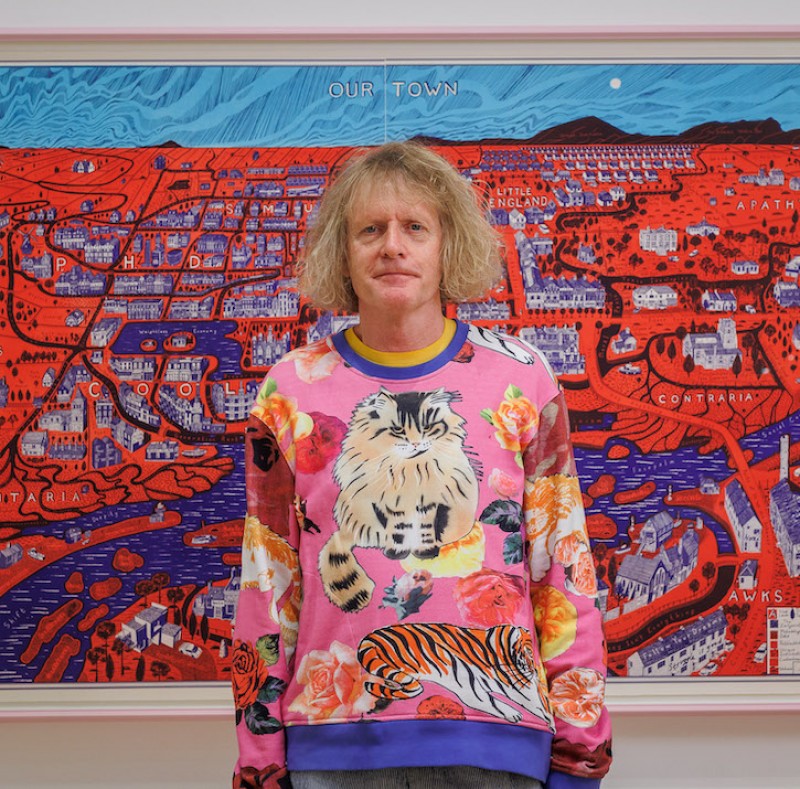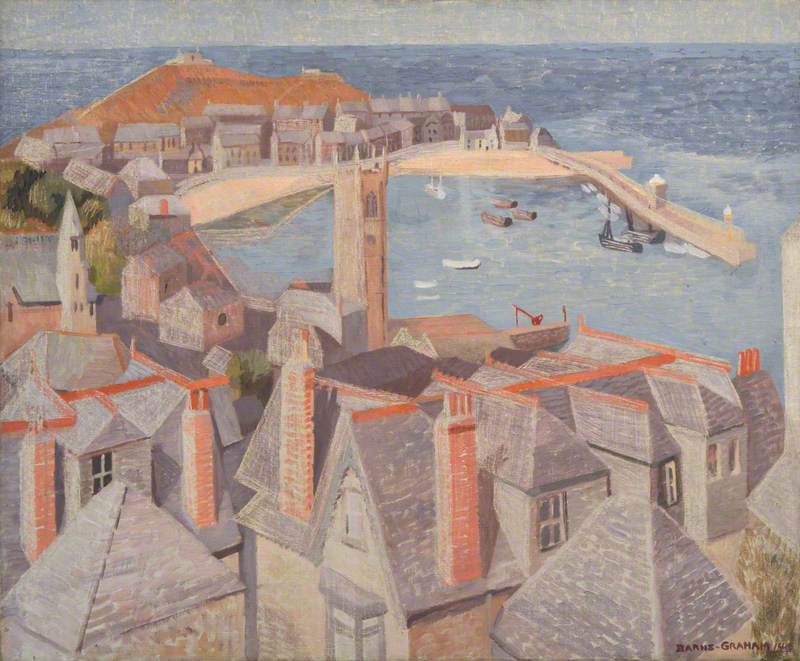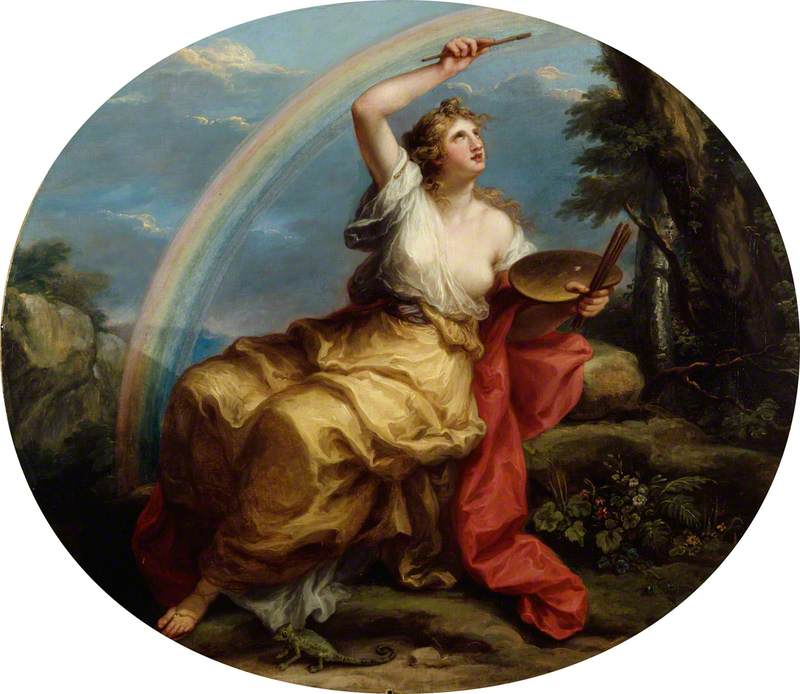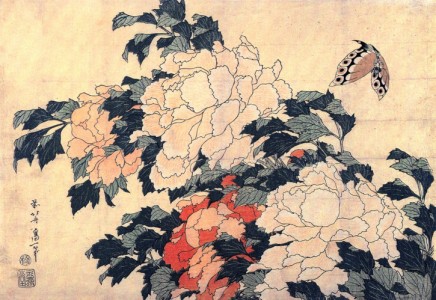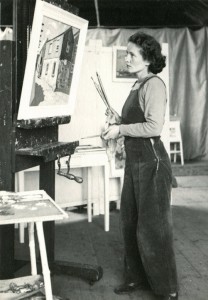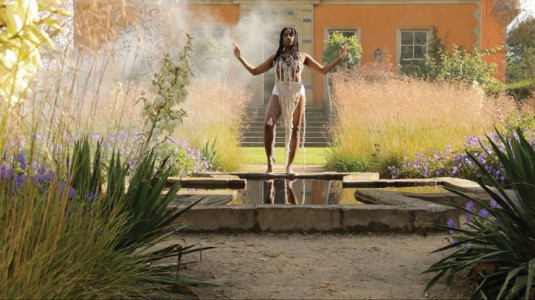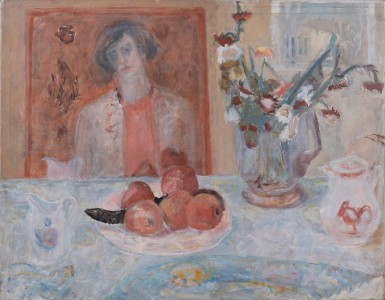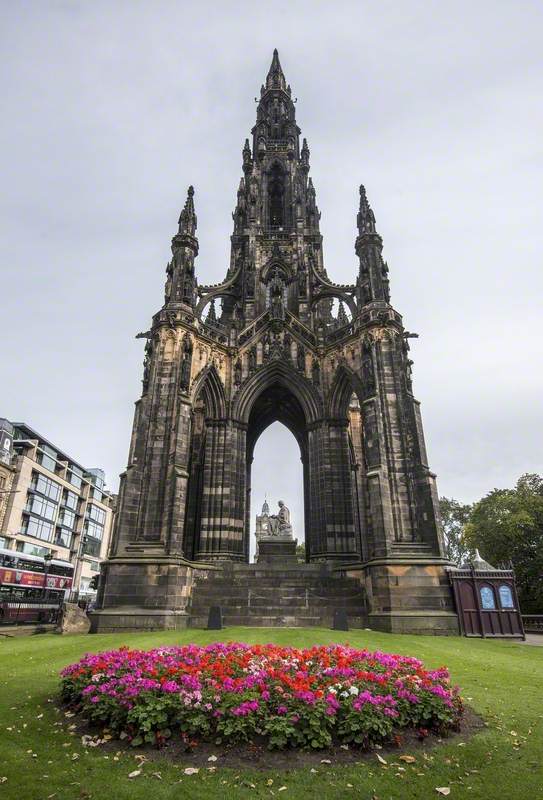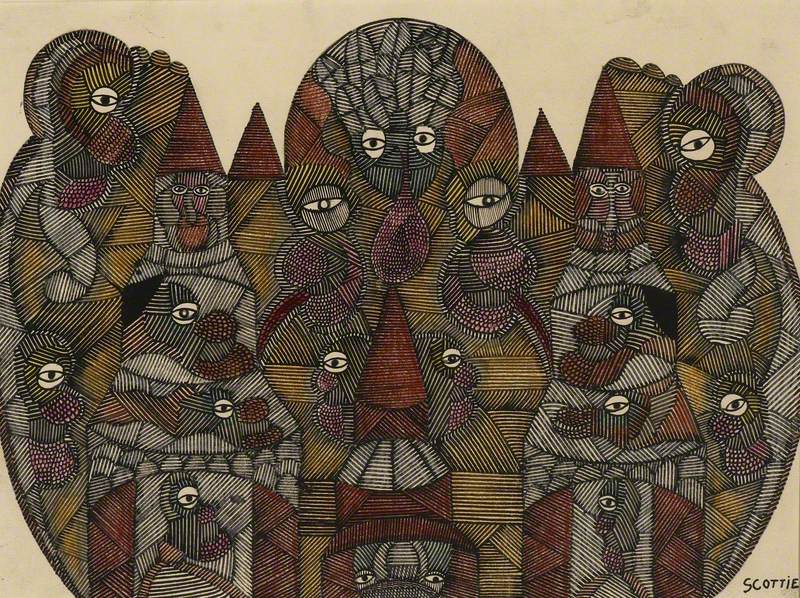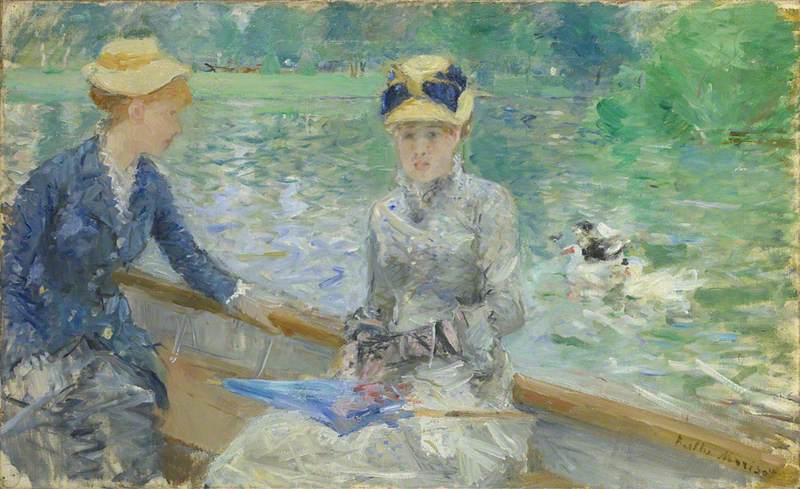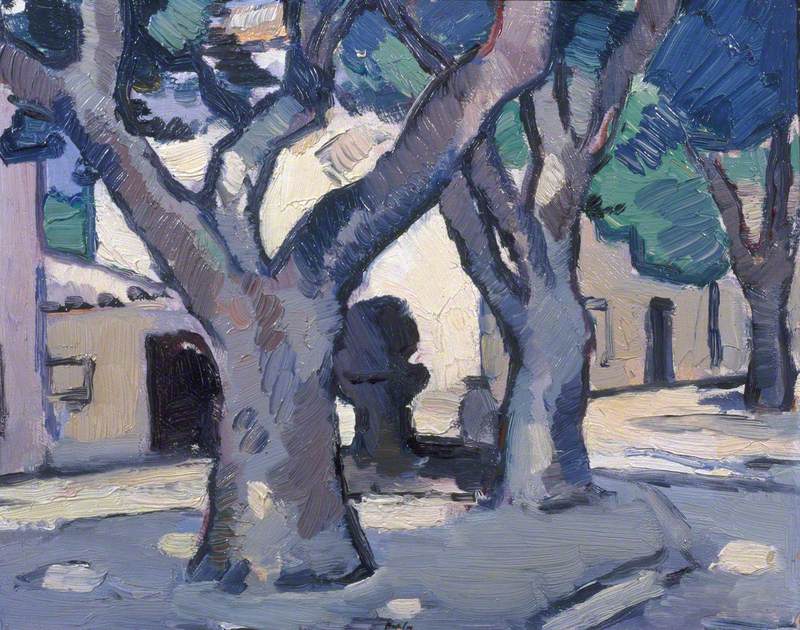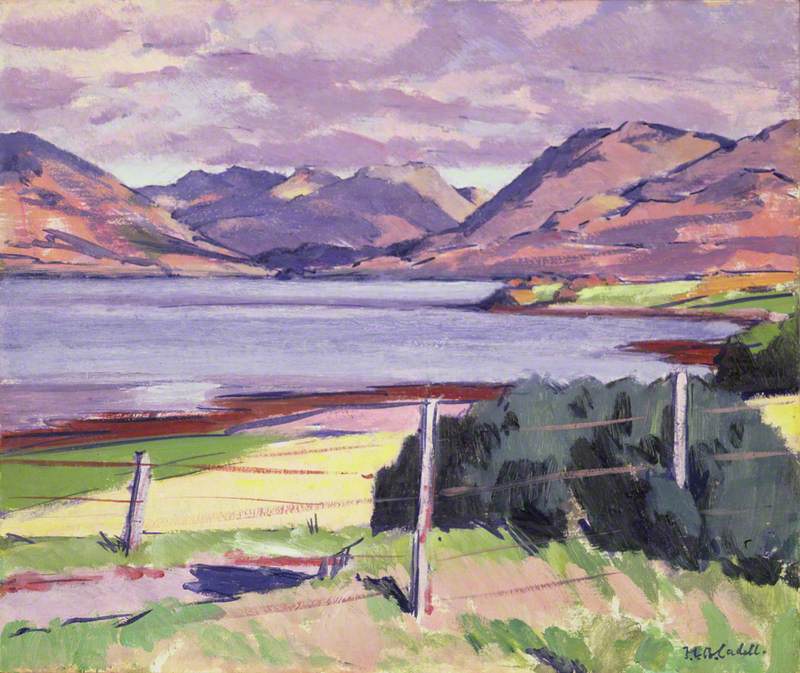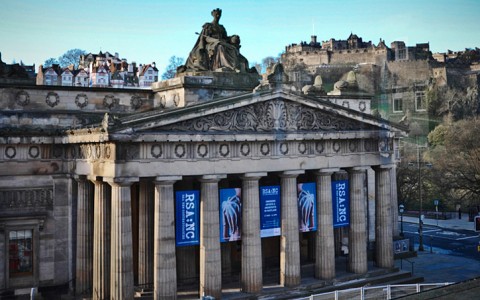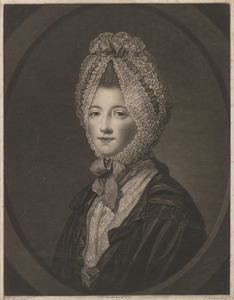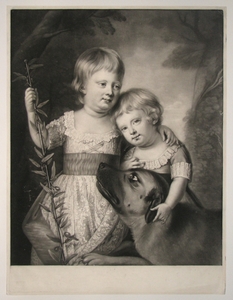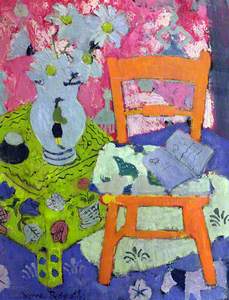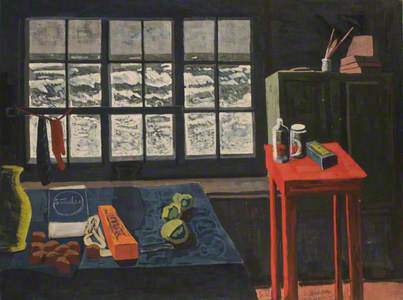A black cat prances angrily atop what would otherwise be a static still life, now chaotically upset by its capricious attack. A vase of lilies – a symbol of innocence – is thrown over, as is a statuette of Venus, the goddess of love and desire, amongst other significant objets. Beneath the cat is an open copy of Mary Stopes' 1928 book Love's Creation, which bears the claw marks of savage, yet superficial, depredation.
The Uncivilised Cat of 1930, painted by Ayrshire-born Agnes Miller Parker, is possibly the most startling image in the new exhibition Scottish Women Artists: 250 Years of Challenging Perception. The picture's message points to chauvinistic male power play and chagrin directed at women's growing financial, emotional, sexual and intellectual emancipation against the backdrop of far greater change: through a partly open window, a car – a symbol of a new world – is seen racing out into a wider landscape. The style itself of the painting was influenced by modernism and, together with the feminist narrative, asserted Miller Parker's uncompromisingly progressive outlook and an effective subversion of the 'still' life genre itself.
The Uncivilized Cat, with its underlying belief in civilised progress, is something of a cypher for the whole exhibition. The Fleming Collection, Britain's pre-eminent, London-based private collection of Scottish art, and Dovecot, Edinburgh's renowned tapestry studios and centre for craft and design, have teamed up to present 84 works across a range of media to illustrate the premise of the show – that over a quarter of a millennium, Scottish women artists have worked to challenge society's prejudice and that the show itself may challenge lingering perception of what constitutes the history of Scottish art.
Lively Blue
2023, tapestry by Sekai Machache (b.1989) and Dovecot Studios, Edinburgh 
In six distinct thematic sections, the curators examine the complex formative forces that have shaped female artistic identities and perspectives. The works assembled draw on The Fleming's growing body of work by Scottish women artists and some choice external loans – all of which are effectively punctuated with hand-woven tapestries, examples of Dovecot's ground-breaking work with contemporary artists, the latter also captured in an accompanying film. The result is a triumphant display which celebrates the self-evident status and relevance of female artists, both of the past and present, in contemporary Scottish society today.
Elizabeth (1733–1790), Duchess of Hamilton and Brandon and Duchess of Argyll
1770
John Finlayson (c.1730–c.1776) and Catherine Read (1723–1778) (copy of) 
While things had already begun to change when the cat wreaked havoc on that canvas, it is easy to forget that these changes have taken time and many had to be hard-won. Key works such as Catherine Read's two eighteenth-century mezzotints are a reminder of the self-determination and single-mindedness required to forge a career as a professional artist at a time when there was little opportunity for females to access formal art training in Scotland.
His Royal Highness George Prince of Wales (1762–1830), and Prince Frederick (1763–1827)
1775
James Watson (1740–1790) and Catherine Read (1723–1778) (copy after) 
Read is thought to have been the first woman artist from Scotland to benefit from teachings in a professional studio in France. After her studies, she set up a highly successful commercial portrait studio in London. While Read's sophisticated portraits of the nobility – mainly women and children – broke no new ground artistically, the mezzotints as means of reproducing and disseminating sought-after images pay tribute to Read's professional and commercial success which rivalled, if not exceeded, that of some of her male counterparts.
The traditional role of women revolving around marriage, domesticity and childrearing meant that women's artistic practice was often focused on the immediate home environment. Instead of limiting the artistic vision, the exhibition shows how these circumstances could be flipped into a source of inspiration. Artists like Mabel Pryde, mother of four and wife to a successful artist, created dramatic works of great poise, often using her own children as paid (!) models, here seen in the stylish portrait of her artist daughter as Pierrot.
Similarly, Anne Redpath, the great mid-century Edinburgh painter and single mother of three, in Orange Chair, transformed her everyday surroundings into leading, post-impressionist work in the tradition of the Scottish Colourists. More recently, Caroline Walker elevated the subject of female domesticity to a theme worthy of being painted on a scale traditionally reserved for far grander subjects. The Fleming Collection holds Walker's study of her large painting Table Laying, Late Morning, May.
The section of the exhibition called 'Art School and Artistic Communities' pulls together some key trends and narratives which also resonate across other sections. Wilhelmina Barnes-Graham's The Blue Studio of 1947 is a reminder of the importance of a dedicated workspace separate from home – something which became more commonplace with the advent of modern art school in the latter part of the nineteenth century, but could also be found in informally established communities such as Kirkcudbright or St Ives.
A star item from The Fleming Collection, the painting conveys the artist's early interest in abstraction and constructivism which she developed while working as part of the creative community in St Ives. Living in the Cornish town at the dawn of the Second World War, she and her friend Margaret Mellis worked alongside Barbara Hepworth, Ben Nicholson and Naum Gabo.
Wind Dance
2011, textile by Dovecot Studios after Wilhelmina Barns-Graham (1912–2004). Wilhelmina Barns-Graham Trust 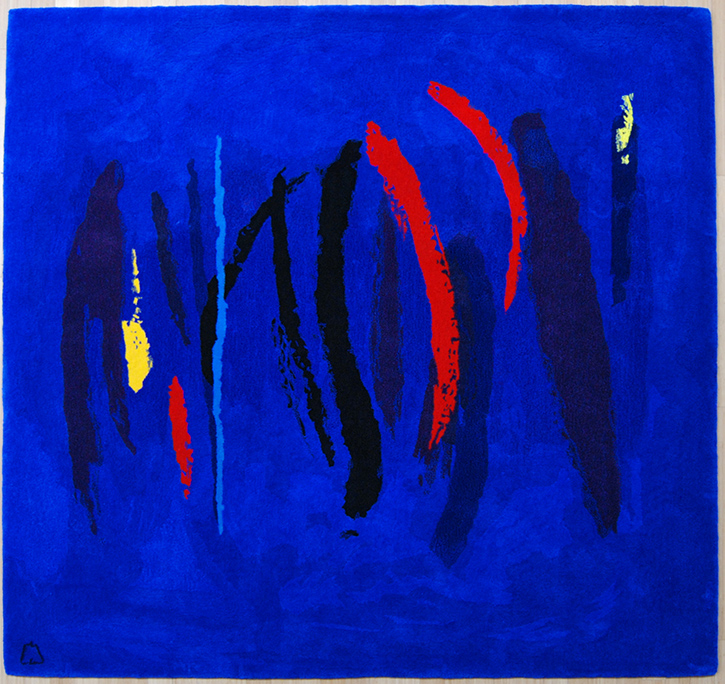
The same section includes Barnes-Graham's sensational Wind Dance rug, woven by Dovecot in 2011. Together, these two works illustrate the artist's key position in the modernist movement in Britain as well as her energetic re-insertion into this important chapter of art history by the Wilhelmina Barnes-Graham Trust from the 1980s onwards.
Similarly, the Glasgow Girls – a trailblazing generation of internationally recognised female artists and designers who emerged from the Glasgow School of Art from the 1880s onwards – had dropped from the national consciousness until their 're-discovery' around a hundred years later. The re-establishment of their important contribution to Scottish Art created a connection between the confidence of Glasgow's golden days and the post-industrial city from the 1980s which was re-inventing itself as a place of culture, art and design.
No exhibition about Scottish art would be complete without these 'girls' and works by Frances Macdonald, Annie French, Jessie Newbery, Bessie MacNicol and others assembled in the exhibition are important reference points in a conversation which in the twenty-first century effortlessly integrates a wide range of female artists into the national story of art.
Butterfly
2015, tapestry by Alison Watt (b.1965) and Dovecot Studios. Theatre Royal, Glasgow 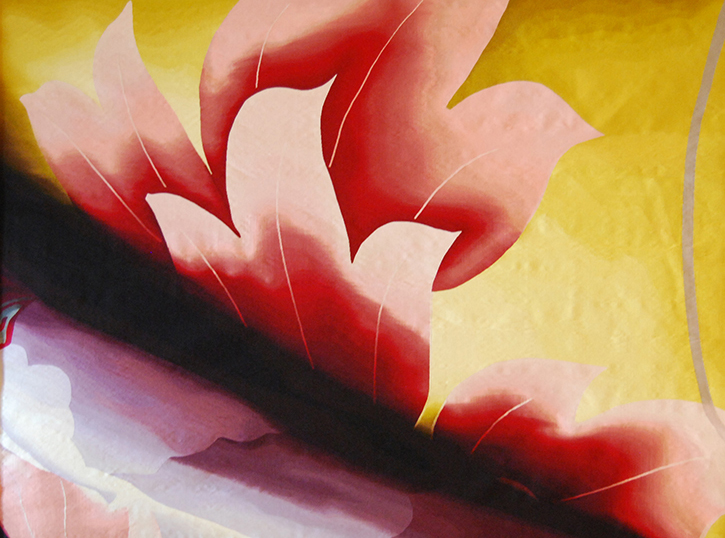
There is also the growing ease with which works classed as 'decorative arts' are now accepted, indeed sought after alongside 'fine art'. The Glasgow Style exemplified a breakthrough egalitarian approach to this hierarchy which had been jealously guarded by the male art establishment. This exciting collaboration between two major but very different organisations has parity at its heart: while many of the works are oil on canvas, the exhibition concept makes tapestries and rugs integral part of the story with a strong cast of sculptures, needlework, prints, works on paper and photographs finding key positions in the display.
The considered juxtaposition of works from the past and present is one of the chief achievements of the exhibition. It stresses the long tradition of female creativity associated with Scotland – a tradition in constant dialogue with the major issues of our times as well as artistic developments across the globe.
Artistic links with continental Europe and the wider world have always been there, whether represented in Beatrice Huntington's nod to Cubism in her captivating 1925 portrait of The Cellist, Elizabeth Blackadder's and Alison Watt's fascination with the Far East or the absorption of light itself, or the hint of the Italian Renaissance in Victoria Crowe's glowing tapestry Richer Twilight.
The exhibition's leading thread is Scottish creativity in all its shades, whether by way of birth, education, upbringing or association with a Scottish art movement. This viable concept of diversity offers perspectives on Scotland itself, not least its propensity for inclusivity. Work by artists such as Turner Prize-winning queer artist Charlotte Prodger, and Hannah Frank – who was part of a Glasgow-based Jewish community – are seen here alongside Barbados-born and Glasgow-based Alberta Whittle's design for Entanglement is more than blood.
View this post on Instagram
Whittle's tapestry was made in 2022 in collaboration with Dovecot Studios for the artist's display at the Venice Biennale. It is rich with symbolism: snake-like shapes covered in a colourful diamond pattern represent the African deity Mami Wata while the hands signal both the greed of empire and its opposing forces.
The beautifully orchestrated, concluding section on 'landscapes' is as inevitable as it is welcome, as Scotland's rugged geography has been influential and inspiring over centuries.
Sekai Machache's photographic prints, entitled Deep Divine Sky 1 and Light Divine Sky 2, head up this tranche. The aesthetic interplay between the sky and its reflection in the peat bogs is the foil against which she examines Scottish and African themes. The glossiness of these very recent acquisitions by The Fleming Collection forms a striking contrast to the more painterly approach in the works by Victoria Crowe, Joan Eardley, Lil Neilson and Kate Downie.
These paintings capture the raw energy and atmosphere of the Scottish landscape, the weather and the interplay between man-made structures and nature. Perhaps placed rather appropriately in this finale, Joan Eardley's Winter Sea III was The Fleming Collection's first purchase of a work by a female artist, in 1968.
Since The Fleming recommenced collecting in 2016, 34 works by 20 women artists have been purchased. In contrast, works by 10 male artists were bought. And almost 100 years after the Scottish National Gallery in 1931 acquired the first work by a living Scottish women artist – Stansmore Dean's 1905 portrait of the writer Neil Munro – their collection policy today leans 55 per cent towards buying work by females.
Neil Munro (1864–1930), Author
c.1890–1900
Stansmore Richmond Leslie Dean (1866–1944) 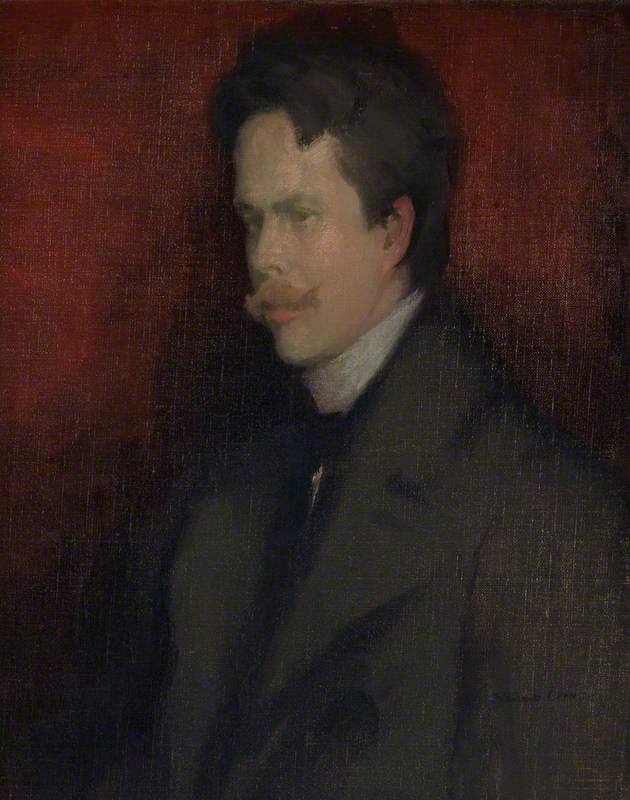
So all is well then, isn't it? We might ask why we need to exhibit surveys of art by females in isolation from men, such as is the case with this exhibition. The answer simply lies in the need to understand the past in order to place the present in context, and this is precisely what this exhibition does. It is too easy to forget how far we have come. As this writer has pointed out elsewhere, even if the present may seem triumphantly hopeful, the past is yet to be wholly won.
Charlotte Rostek, author of Scottish Women Artists
The exhibition 'Scottish Women Artists: 250 Years of Challenging Perception' is showing at Dovecot Studios, Edinburgh from 28th July 2023 to 6th January 2024. Part of Edinburgh Art Festival 2023
